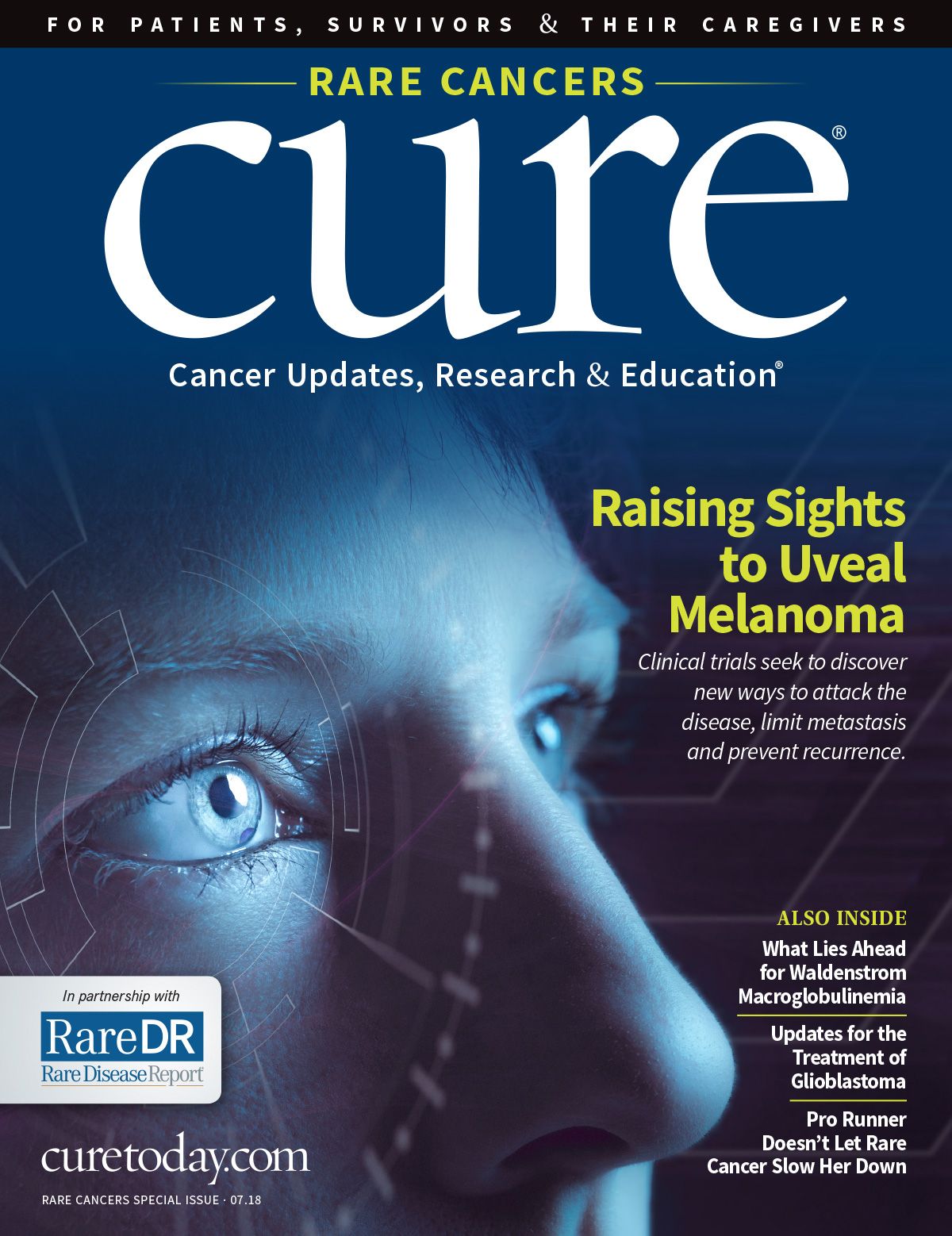Driving Research in Rare Cancers
Research continues to drive the oncology field.
Research continues to drive the oncology field.
Investigators are in the lab testing the newest drugs and cuttingedge techniques in hopes of extending the survival of people whose lives have been turned upside down by cancer — maybe one day even finding a cure.
But in a rare cancer, which is defined by the American Cancer Society as fewer than six cases per 100,000 people each year, the challenge becomes studying these diseases because of their rarity. Particularly, this is an issue in uveal melanoma, cancer of the eye, because the risk factors are still not well defined. Our cover story focuses on refined radiation techniques that allow physicians to save the affected eye and preserve their patient’s vision, as well as drugs and combinations of drugs that are being studied in early-phase clinical trials. Two patients share their very different journeys with uveal melanoma — one woman developing metastasis to her liver and brain — and how they are doing today.
Also in this special issue of CURE®, we explore the latest innovations in treatment for glioblastoma, more commonly known as GBM. Each year in the United States, approximately 12,000 new cases of the rare and aggressive brain cancer are diagnosed. Once considered a disease with a very grim survival rate, patients are living longer thanks to new advances in surgery, drugs and diagnostics.
The drug larotrectinib brings hope to patients with rare pediatric cancers. Recent study findings show a response rate of more than 90 percent in those who harbor a specific fusion of two genes in their tumor when treated with larotrectinib. Having received a metastatic sarcoma diagnosis at 11 years old, one young girl from Texas entered a clinical trial. Two years later, she is back at school with her future goal in mind: moving to New York City to be a fashion designer.
And after brain surgery, radiation, chemotherapy and clinical trials, a 20-year brain tumor survivor reflects on why she believes she is alive and thriving. Jeannine Walston shares her journey, what she has learned and how it has transformed her.
Also in this issue, a new drug approval for rare thyroid cancer, how socioeconomic status may affect the survival of patients with anal cancer and recent advances in sarcoma as told through an expert voice.
As always, thank you for reading.
MIKE HENNESSY, SR.Chairman and CEO

Dickey Betts Died, ‘Shopaholic’ Author Announces Cancer Diagnosis and More
April 19th 2024From the Allman Brothers Band’s singer Dickey Betts dying after a cancer diagnosis to the “Shopaholic” author announcing her glioblastoma diagnosis, here’s what is happening in the cancer space this week.
Read More